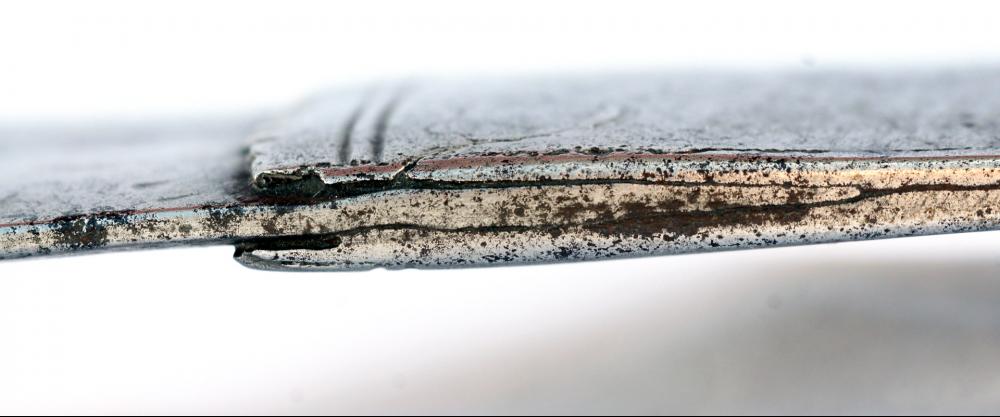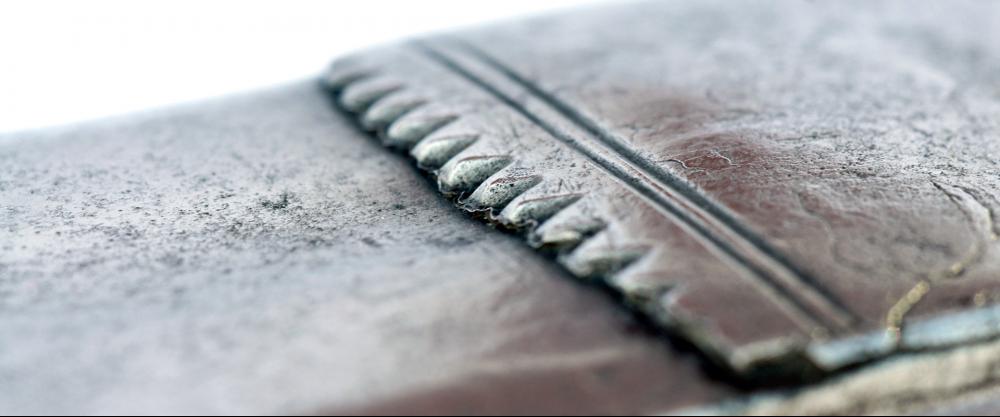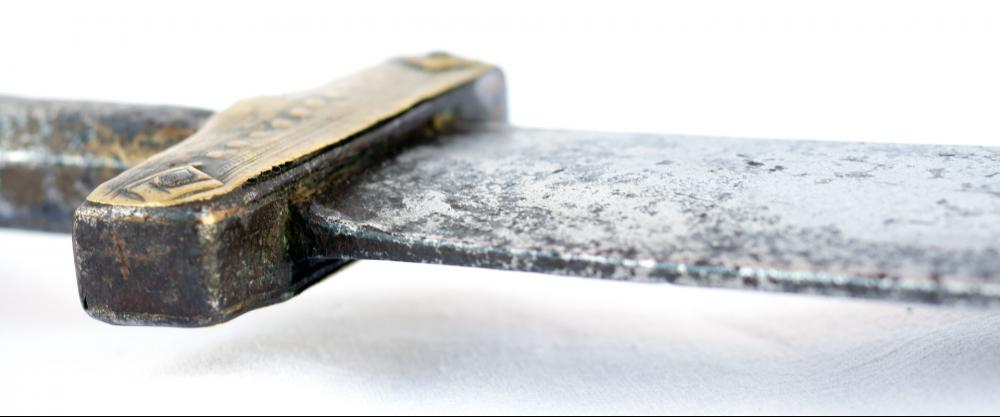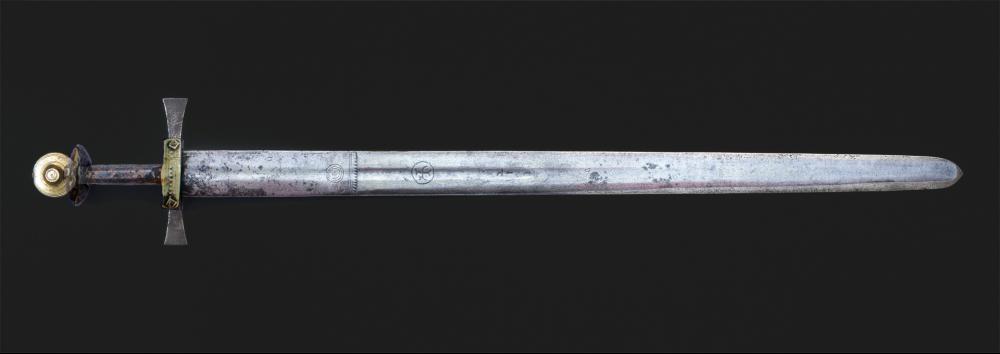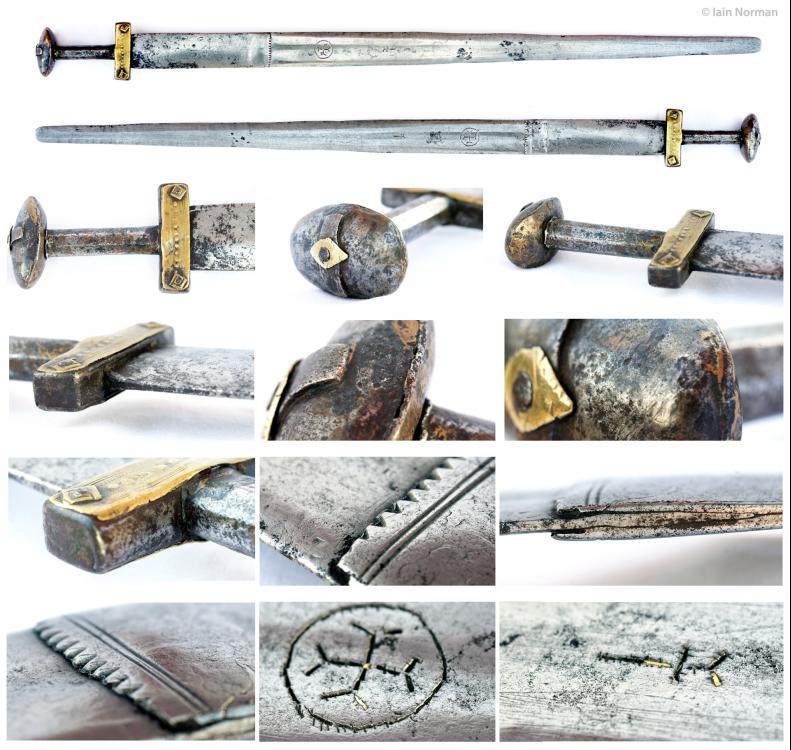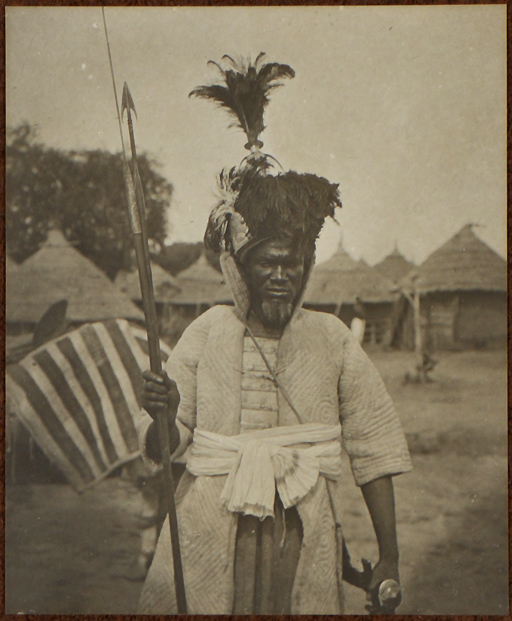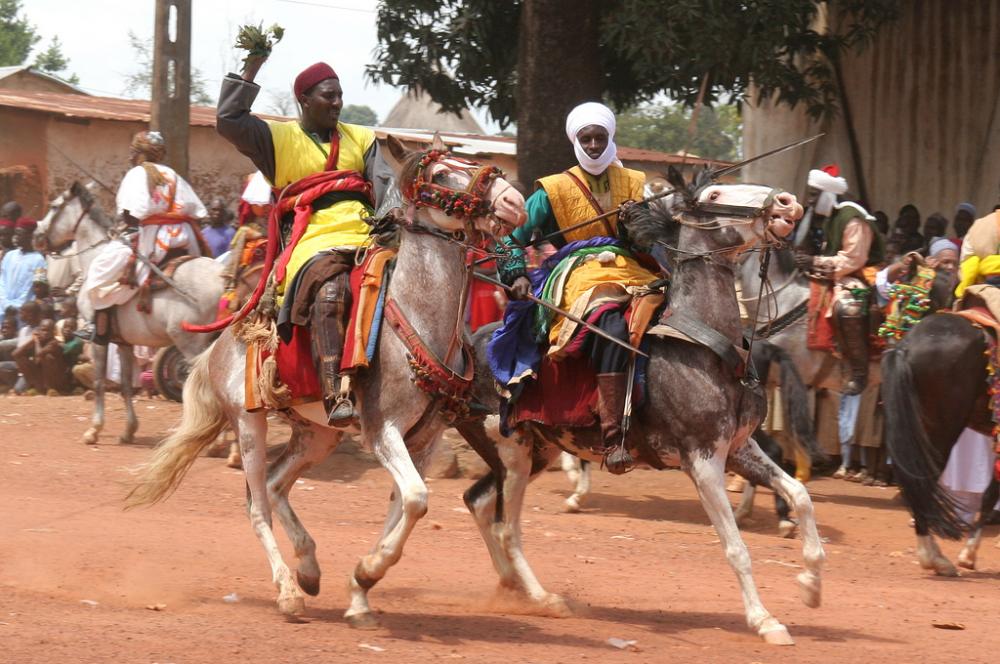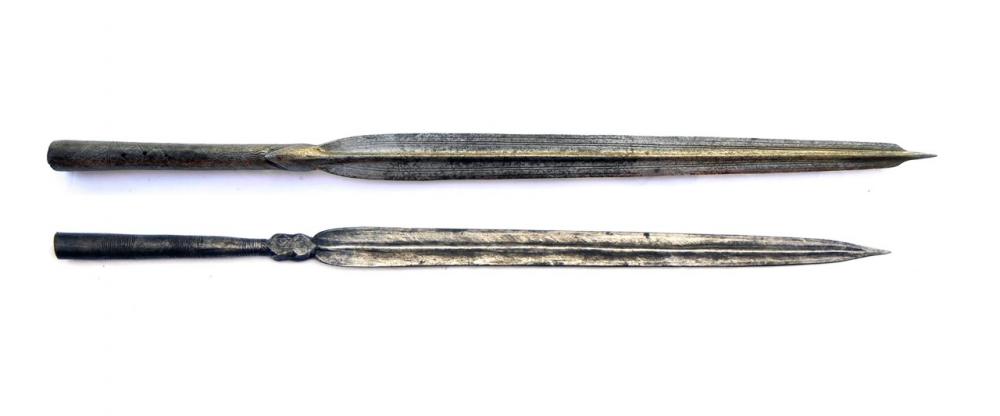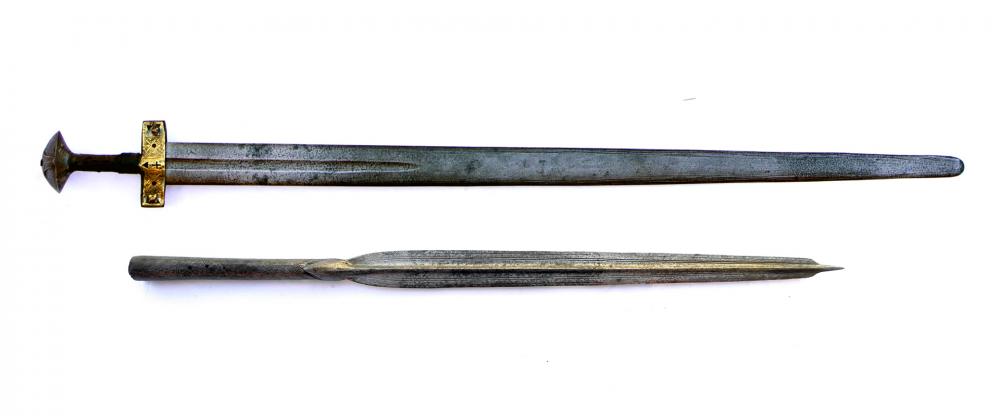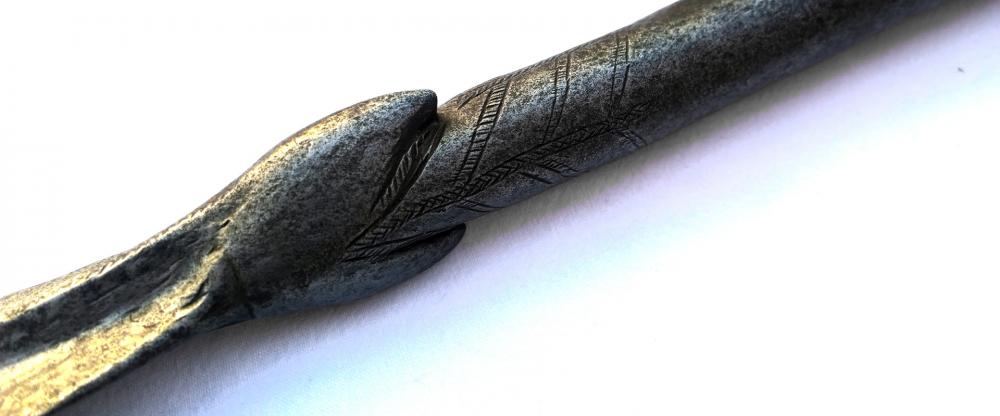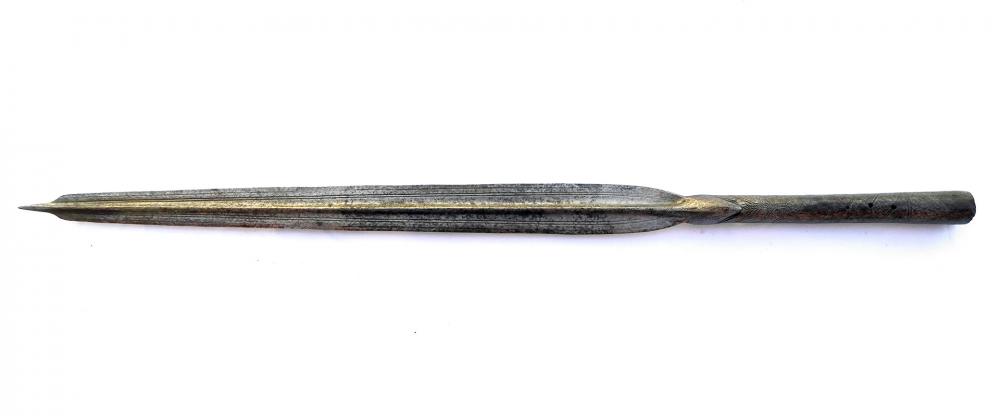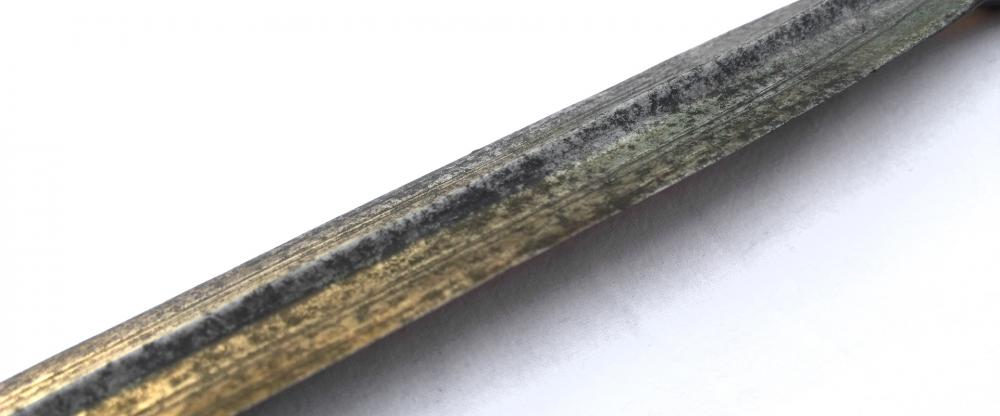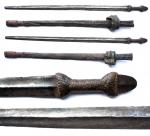-
Posts
23 -
Joined
-
Last visited
Contact Methods
-
Website URL
http://takouba.org
Profile Information
-
Gender
Male
-
Location
Czech Republic
ispn's Achievements
-

A few takouba (West African sword type) from my collection
ispn replied to ispn's topic in Swords & Edged Weapons
Hi Peter, looks like you might have posted the same post twice by mistake? -

A few takouba (West African sword type) from my collection
ispn replied to ispn's topic in Swords & Edged Weapons
Fascinating Peter! Bauchi is an interesting area and if I'm not mistaken with a bit of a Kanuri population in the north as well. A pity about the sword that went missing. Most of the truly good swords seem to have ended up in the UK due to colonial bring backs. While France also holds quite a few from their colonies. About the blade mount, I completely understand a bit of skepticism about how sturdy this would be in practice and I have to admit I haven't exactly been stress testing a 660 year old blade! However I've had probably ten or so of these pass through my hands over the years and all have given the impression of being quite sturdy and the wear and sharpening on the blades indicates they were used. Certainly these mounts give the impression of being just as sturdy as the full length blades. In the case of this particular sword, it holds particular interest for me as the hilt and mounts themselves are probably the oldest I own and I suspect this sword left Africa quite a while ago. Certainly it predates, based on what I can ascertain from examples with collection dates, the 19th century and based on what I have to admit is some conjecture, I suspect the mounts date to before the 18th century. All good fun to imagine of course, proving it is another thing! Thanks Trooper, just call me Iain by the way. It is indeed an interesting approach reflecting I think the high value placed on quality steel in these regions. Blades were and are revered and passed down for generations. I can't think of another instance where blades are mounted this way on a regular basis. Obviously it worked well enough to be considered worth doing! For some collectors it's a bit of a blemish I think to have a broken blade, but for myself, it's actually become an intriguing way to ID older blades. -

A few takouba (West African sword type) from my collection
ispn replied to ispn's topic in Swords & Edged Weapons
-

A few takouba (West African sword type) from my collection
ispn replied to ispn's topic in Swords & Edged Weapons
Good eye! Yes, the sword uses a new forte to mount the European blade. The forte is secured to the hilt by a tang and thus the hilt is quite secure. The blade in turn is then attached to the forte in quite an interesting manner. The forte is a quite thick piece of steel, the end of the steel is split and the blade inserted, pins are then forge welded at each end to secure the blade. Oddly enough this is actually one of the sturdiest mounts I've encountered! Rock solid really without a mm of movement between the blade and the forte, this seems to have been a somewhat popular style for extending the life of blades and I've seen a number of these over the years on blades of various ages. In any case, as odd as the mount seems, this is very much a fighting weapon and the sword has seen repeated sharpening on the blade. Here's an overlay with a complete Medieval sword of around the same age and likely from a similar workshop which used to be in the Alexandria arsenal. -

A few takouba (West African sword type) from my collection
ispn replied to ispn's topic in Swords & Edged Weapons
I always wanted to visit northern Nigeria. Particularly Kano, Sokoto and Bida. Mind if I ask which part of the country you were in? Sadly it is not a good time to attempt travel in the area. It's very much a niche area of study, but I'm glad others find it of interest as well! Since I first started this thread one of the swords I posted before, with a medieval European blade dating to around 1350 was restored. I thought I might as well post the images to show it off properly. -

A few takouba (West African sword type) from my collection
ispn replied to ispn's topic in Swords & Edged Weapons
Oddly enough plate and maille was not unknown.... Couple photos attached of a cuirass used in Bornu and northern Cameroon and one on a rider. I've wanted one for ages and lost an auction on one just before Christmas. The attached example is from the British museum. The photo with the rider wearing one, you can see it under his padded over garment (which on its own was quite effective armour as well!). I've noticed in Nigeria the traditional durbars seem to have had the spears disappear by the 60s. Although they seem to still be around or were until recently in Cameroon. An image from Ngaoundere attached here shows a more recent scene. Credit for the image is: https://www.flickr.com/photos/mikarama/2666075674/in/album-72157606151530689/# Generally I think the level of weaponry and armour in use by the elite of the Islamic kingdoms in the region is a surprise unless you've come across it before. Part of the fun for me with collecting in this field is dispelling the old trope of the savage with his spear and loincloth from Darkest Africa. -

A few takouba (West African sword type) from my collection
ispn replied to ispn's topic in Swords & Edged Weapons
-

A few takouba (West African sword type) from my collection
ispn replied to ispn's topic in Swords & Edged Weapons
It is from modern day Northern Nigeria. Where the kingdoms and emirates employed cavalry for centuries, so very much indigenous! A near identical lance can be seen in "Weapons & Implements of Savage Races" by L Montague, 1921. -

A few takouba (West African sword type) from my collection
ispn replied to ispn's topic in Swords & Edged Weapons
A very large lance head from Bornu or Northern Nigeria. These were cavalry lances and you will notice the point is designed to pierce armour, while the shoulders where the blade meets the shaft are particularly large to absorb the shock of mounted use. Shown next to a takouba to illustrate the size. -

A few takouba (West African sword type) from my collection
ispn replied to ispn's topic in Swords & Edged Weapons
Thanks for the warm welcome back Brian, I have to admit what I can offer is quite limited in scope but I am always happy to share! I had a bit of a break in focus in collecting for the last year but I will add a few additional images of the two swords shown above and a couple others as well. First the 16th century blade. It has the remains of an inlaid running wolf mark and a deeply stamped mark which is usually associated with the Venice armouries. The second sword shows a series of astral engravings (sun, moon, stars etc.) popular in Solingen, Germany made blades from the 17th and 18th century. Finally this is an interesting piece showing a bit of a more recent trade link, I suspect this dates from 1900-1925 in terms of the mount, but the blade is a colonial European sabre. I am not sure of the exact pattern. -

A few takouba (West African sword type) from my collection
ispn replied to ispn's topic in Swords & Edged Weapons
It has been quite a while since I posted here! I thought members might enjoy seeing a spear and a few takouba I don't think I ever posted before. The spear is an allarh, a type of all steel Tuareg lance. The sword with brass on the guard is a 16th century Italian blade and very old mounts. The other sword a likely German blade from the 17th century and very old mounts as well. A wonderful new year to all! -

A few takouba (West African sword type) from my collection
ispn replied to ispn's topic in Swords & Edged Weapons
Actually there was a lot of trade between the Sahel states and the Mediterranean coast. In earlier periods this consisted of gold and slaves and salt. While in later periods other items like leather from the Hausa states was heavily traded (known as Moroccan leather in Europe at the time) as well as textiles. A somewhat more bizarre item, but heavily in demand in Europe, was ostrich feathers! Going back down the routes were a variety of goods which included blades. This trade existed during the medieval period and was the reason for some of the earlier African empires like Mali or the Songhai empire sprang up in the regions they did. For the medieval blade of mine - hopefully it doesn't violate the forum rules if I just put a link to my website. The blade features a cross fourche and split upright cross. There is sadly not a definite book on these swords although there are some good article ("European Blades in Tuareg Swords and Daggers" by Briggs) but oddly enough since you mention it, one is in the works. ;) -

A few takouba (West African sword type) from my collection
ispn replied to ispn's topic in Swords & Edged Weapons
Thanks! The pieces I've posted are fairly rare, in that some of them are quite old. The type as a whole does show up at auction fairly regularly. Particularly in the UK where they were common colonial bring backs (Nigeria in the case of the takouba and Sudan for the kaskara). -

A few takouba (West African sword type) from my collection
ispn replied to ispn's topic in Swords & Edged Weapons
Certainly not a popular field I guess! In some ways I'm grateful for that as purchasing pieces still remains semi affordable. Attached are a few more examples, some from other cultures and classed as different sword types from takouba. -
Well I can hopefully shed a little light on this. S. Terzian refers to Sarkis Terzian. He was an Armenian (1868-1815) who spent time in Egypt and Ethiopia and supplied quantities of arms to Menelik the II. These blades are usually from Solingen makers in Germany or British as you mentioned.




